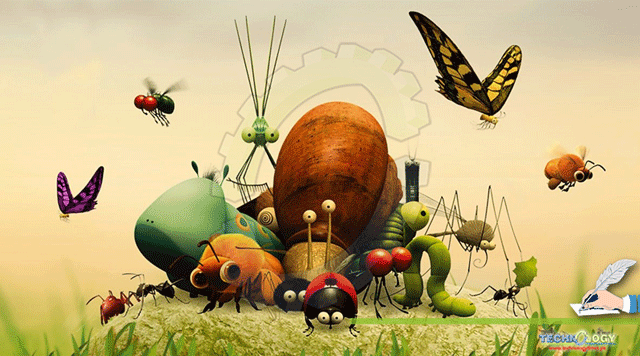Have you ever thought about why insects are successful living organisms on earth? That is because they have adapted their body structure to survive in almost every niche and environment on earth. Insects, also known as Arthropods, are inhabiting the planet since 480 million years ago.

By Dr. Akasha Tanveer,Dr. Muhammad Sohail Sajid
These oldest creatures have evolved through Ordovician (485.4 million years ago) to late Carboniferous (359.2 to 299 million years ago) and early Permian periods (299 million years ago). With time, arthropods not only aced to survive major events in earth history but also adapted to carry pathogens and transmit them to the host.
While thinking about this fact, we can say that insects act as a taxi to pick an infection from a location and drop it off at a new location of interest. The new location could be an animal body or a human being (host). This specific behavior of acting as a carrier for a pathogen is called Vector and these diseases are characterized as Vector-borne diseases (VBD).
Pakistan, as a subtropical country, is a home for many insects viz: mosquitoes, flies, ticks, midges, fleas, and mites. The pathogens include bacteria, viruses, rickettsia, fungi, and protozoans. The insect takes the blood meal from the host individual and transmits the pathogen in return. Some fatal VBDs prevalent in Pakistan are malaria, leishmaniasis, dengue, chikungunya, and Crimean-Congo hemorrhagic fever (CCHF). In livestock, anaplasmosis, babesiosis, and theileriosis accounts for major economic losses.
According to WHO, more than 80% of the human population is at risk of encountering these diseases. The reasons may be stated as the presence of poor sanitary systems, insects in close vicinity to human communities, the geographical distribution of insects, low socio-economic condition, illiteracy, and climatic changes. Another important factor contributing to the risk of VBD is the immune status of the population. People with weak immunity are more susceptible to get infection.
Is there any zoonotic risk of these diseases? The answer is Yes. Zoonosis is defined as the transmission of disease from animals to the human population. An example of CCHF can be quoted in this context, as the virus does not show any symptoms in infected cattle. But when gets into contact with a human, it begins with weak signs and symptoms and progresses to a serious condition with a risk of 2-50% mortality. There is another term, Zooanthroponosis, which includes all the diseases transferred from humans to animals. This transmission is also known as reverse zoonosis. Many researchers have reported reverse zoonotic incidents, for instance, giardiasis, influenza A, cryptosporidiosis, and MRSA (methicillin-resistant Staphylococcus aureus). People have reported allergies from the bite of insects. Not only this, but insects are also responsible to carry many wildlife pathogens (sylvatic cycle) consequently, various diseases are re-emerging.
To prevent any deadly outcomes of any disease, timely diagnosis plays a crucial role. Several diagnostic techniques are available that range from as simple as blood test, stool/ fecal examination to X-ray, MRI, PCR based analysis, and other serological tests. The physician/ veterinarian, after a confirmed diagnosis, will prescribe suitable medicine to overcome the symptoms caused by a specific infection.
So many threats from so tiny organisms! But why don’t just wipe them off the planet? Because despite all the losses, they are assisting humans in many ways. Insects help farmers by eating certain weeds and keeping crops healthy. Insects are also used for medicinal purposes. This is called Entomotherapy. A famous example is Apitherapy or bee venom therapy, which has proved to be miraculous in arthritis, tendonitis, and osteoarthritis. Maggot therapy is usually used to infest the wound for cleaning purposes. For ages, healers have seen that maggot-infested wounds heal quickly as compared to other wounds. In some areas of the world, ants with strong jaws are used to suture deep cut wounds.
Approximately 75% of pollination depends on animals, majorly insects. These are not confined to honeybees but to other bees, butterflies, beetles, and flies. Several insects play a significant role as Cleaners. These include saprophagous (organisms that feed on dead animals/plants) and coprophagous (organisms that feed on feces) organisms. There would have been a lot of decayed mass if there were no insects. These insects feed on dead/feces and break down the nutrients that are absorbed by plants.
Insects provide us with many useful products. Honey is one of the miraculous products which is used in healing sore throat, energy booster, and in skincare. Silk, a material produced by salivary glands of insects, is used to make fabric. Sericulture (silk production) is a well-established process in which caterpillars are raised to produce cocoons from which silk is extracted. Cochineal dye, from cochineal scale insects, is used to give color to cosmetics. Shellac, from an insect called lac scale, sucks tree sap, is used to give a wood finish.
Looking at all these benefits from insects, we should be thankful for these tiny creatures. However, we can control the damaging effects by taking hygienic and precautionary measures, and
Let’s continue to live in harmony!
Authors:
Dr. Akasha Tanveer
DVM, MPhil Parasitology,
UAF.
Dr. Muhammad Sohail Sajid
Professor, Department of Parasitology,
UAF.